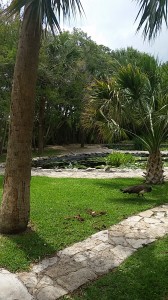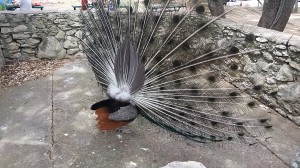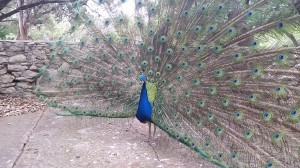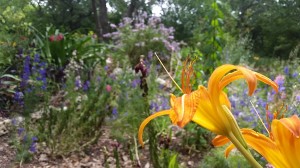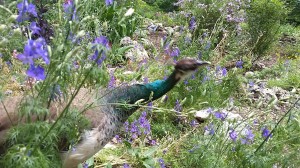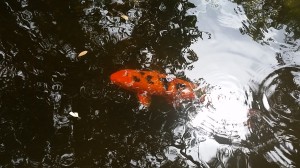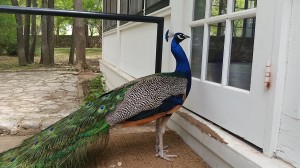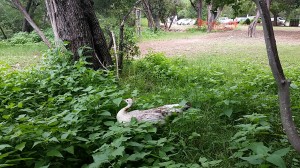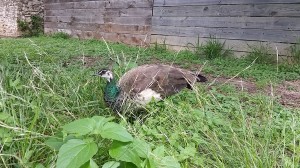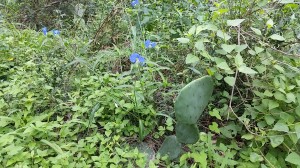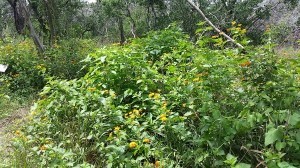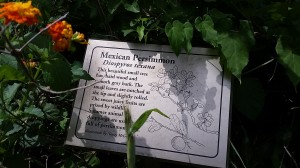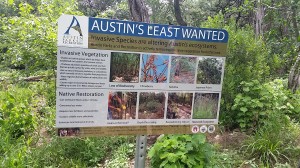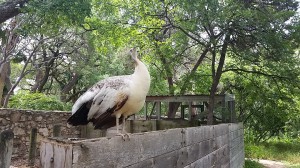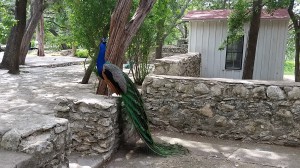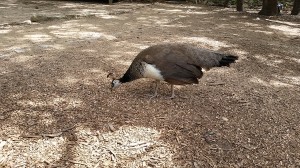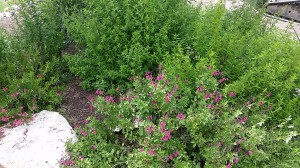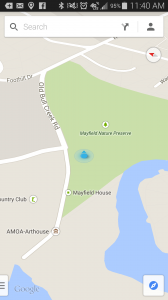Even while driving into the entrance of Mayfield Park in Northwest Austin, I could hear the piercing screams of the peacocks in the park. The temperature for the day was in the low 90’s with high humidity since we saw some small rainfall in the morning. The ground was not hot and crunchy, but rather soft under the fresh precipitation and mulch-lined trails. The park itself is a very peaceful place, with botanical gardens set up along the main entrance and multiple coy ponds litter the grounds in a beautiful manner. Since the weather was “nice” for a Texas summer day, the park was actually a bit crowded with many other photographers and picnic-goers wanting to enjoy the beautiful peace that nature brings to this park.
“Wilderness is the raw material out of which man has hammered the artifact called civilization.” (pg.188)
This is an obvious and notable quote to take out of and apply to Mayfield Park. While the park itself is mostly untouched(only trails and ponds have been built along with a field house), the surrounding area which is similar in the ecological structure has been taken up by country clubs and large mansions. Man has taken the beautiful outdoors and turned it into their own living space. While they still have made these places look nice and pertain a native feel, it still is no longer the raw outdoors.
There was a big sign set up right before the trail of the park emphasizing the need to keep this park and the rest of Austin native with plant life and to remove any invasive species. The park was a relatively native place but the signs of invasive species coming in were obvious. The park has and infestation of Chinaberry, Nandina, and Japanese Privet, all of which I saw while I was there. Parts of the trails were closed off to hikers like myself since the park was currently under volunteer work to remove these species. I believe that it will be neat to come back to this park in a year to see what the changes are after the invasive species plant removal has been completed.
Some of the beautiful flowers I saw at the park and were able to identify using the markers they had there were Mexican Persimmon and the White Boneset. The peacocks and peafowls were actually eating some of the plants and flowers in the park while I was there. The botanical garden which is located near the ponds had an abundance of other beautiful Texas flower that thrive well in the climate. Minimal watering and maintenance has the be done to the park to keep it beautiful looking.
At one point, I could hear the rustling of something in the bushes right off of the trail. Upon further inspection, I discovered a Texas Horned Lizard was running around, likely looking for food and then made its way up a tree trunk. Since the park is such a large area, I would expect further observation would allow me to see different consumers and predators such as white-tail deer and coyotes. 